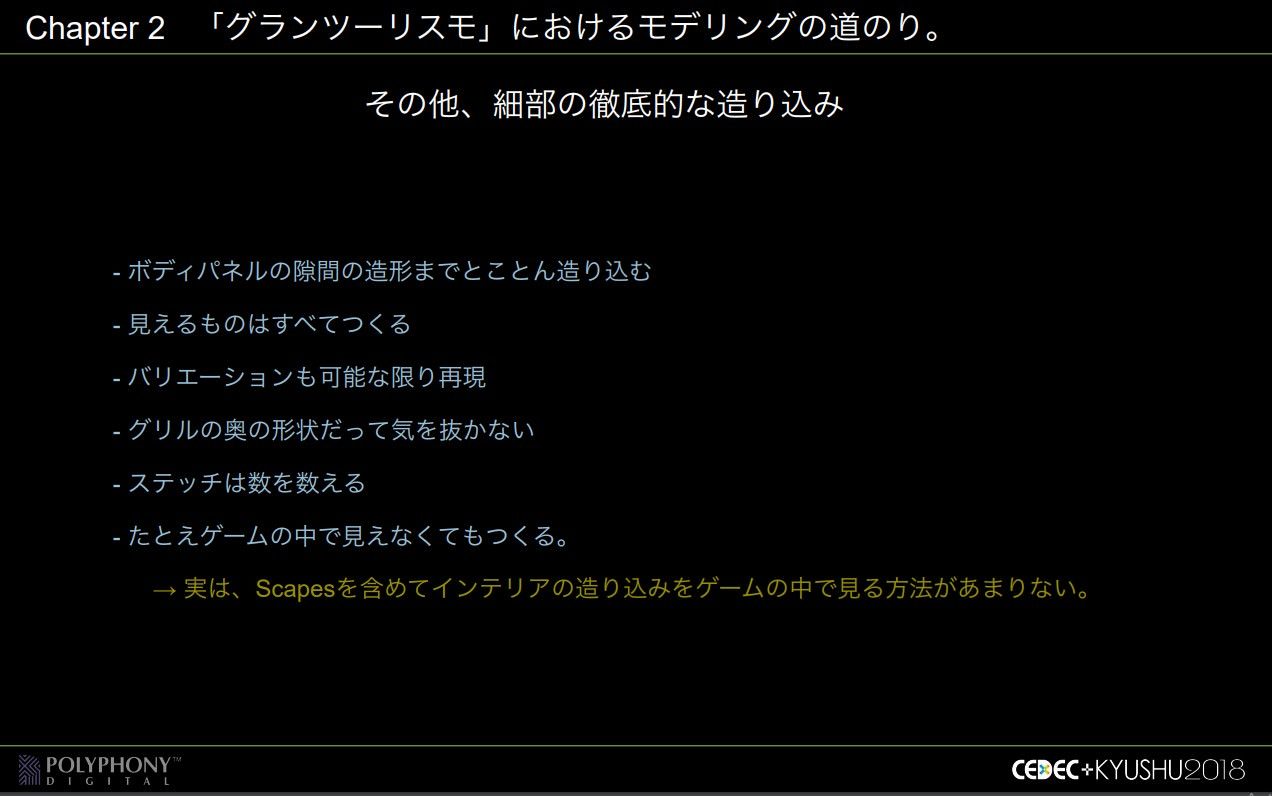GTPNewsWire
Contributing Writer
- 20,178

- GTPHQ
This is the discussion thread for a recent post on GTPlanet:
This article was published by Jordan Greer (@Jordan) on December 24th, 2018 in the Gran Turismo Sport category.
Another presentation in Japanese : Procedural Hard Surface Design | Akira Saito | SIGGRAPH Asia 2018 (Tokyo)This has been a pretty big change in PD's approach to the game in general. They've been sharing a lot about the dev process and I love that about them now, even if it all goes over my head.
 )
) Precisely.I need.
PD could.Seriously, it's a marginal question...we need real 4k resolution.
I need.
Another presentation in Japanese : Procedural Hard Surface Design | Akira Saito | SIGGRAPH Asia 2018 (Tokyo)
I think all the buildings at Tokyo Expressway are made with Houdini. (And the speaker is wearing a Pikes Peak jacket)
In general, Poly is less secretive today wich is great! And the studio is still hiring, I wonder how many people work at Poly?
You need to double check your settings. There is a huge difference in the realism of the lighting and overall graphic quality with HDR. Good HDR brings out detail in textures such as the road.Our new Samsung does HDR 10 and sometimes I'm not sure I prefer the HDR look over the SDR I've been playing in for a year.
I just went through the slides. I didn't know before but I guessed they adapted HDR10 since most modern TVs with HDR have it. Lots of info there. Definitely worth a read for the enthusiasts of video rendering. Some of the solutions PD found to problems of implementing HDR is so simple and yet effective. HDR rendering still seems to be in an experimental phase because there seems to be world wide standard (maybe apart from BT.2020). These guys know what they have done is not perfect but they are aware of the bottlenecks and what areas need improvement. This is a masterpiece in progress.
You need to double check your settings. There is a huge difference in the realism of the lighting and overall graphic quality with HDR. Good HDR brings out detail in textures such as the road.
Interesting article, especially about the calibration and testing with the different tv's. But one thing i also would like to know is what color tone profile they would recommend, as it changes the image a lot.
On my tv I use warm2 (Samsung) as that was recommended by a digital foundry video. But it would be nice to know what the developers use and recommend.
You need to double check your settings. There is a huge difference in the realism of the lighting and overall graphic quality with HDR. Good HDR brings out detail in textures such as the road.
After reading through the slides I re-calibrated my TV (Samsung KS7000). Turns out I didn't light up the dark pieces enough because I didn't understand the principle behind it. Results are indeed noticeable.
We have a similar TV I think, turns out despite selecting HDR on the PS4 and Game Mode, HDR was off by default on HDMI 3. Can definitely see the difference now.
They have arguably the best modeling, yet there is still no way to freely look at the interior and take pictures. Baffling.

Your loss, sir....meantime GT has bacame the ugliest cockpit view "game" in industry. I drive everything which are available in the market. I have PC and PS4 Pro too, full HD and 4k display. GT Sport is ugly. Period.
...meantime GT has bacame the ugliest cockpit view "game" in industry. I drive everything which are available in the market. I have PC and PS4 Pro too, full HD and 4k display. GT Sport is ugly. Period.
PD showing off their live replay movie creation and realtime raytracing
I really hope they give us some of these controls, the interior color swaps should totally be a thing. As well as slow mo shots plus all the other cool things